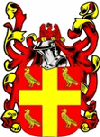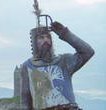el cid again
Posts: 16922
Joined: 10/10/2005
Status: offline

|
quote:
ORIGINAL: Kereguelen
quote:
ORIGINAL: Andrew Brown
quote:
ORIGINAL: Kereguelen
Andrew,
concerning your map and China: Please make Yenen and surroundings mountain (or at least wood) hexes in your next map version. The Chinese Communists retreated ("The Long March") to this area because it was rather rugged/mountain terrain and easy to defend (originally against the KMT Army, of course). In your current map version it is a Clear hex and quite easy to take...
I assume you mean Yenan (which is called Yenen on the stock map)? OK, I will take a look at the area again. I usually only use mountains for truly mountainous areas (heights > 3000m), so I will probably add some forest - which has to be used for "rough" terrain - if it seems justified.
quote:
[Similar issue with the border hex between Manchuria and the Maritime Province near Vladivostok, this should be wood terrain; and the map is missing some rather impressive mountain ranges at the border between Outer Mongolia and Manchuria.]
K
OK. I will take a look. I know the area you mean between Greater Mongolia and Manchuria. Regarding the border hex near Vladivostok - do you mean the hex on the Manchuria side, the hexes on the Soviet side, or both?
Thanks,
Andrew
Yes, was talking about Yenan (many spellings possible). Only heights > 3000m as mountains? In some places heights > 3000m would be inaccessible, while in other places not (just to give an example: Italy is quite mountaineous but the mountain ranges on the peninsula are mostly not very high; the Monte Cassino: 516m..., the Corno Grande as highest peak of the Gran Sasso d'Italia: 2,912m). Iwo Jima is mountain terrain in WITP but Mount Suribachi is 166m high.
The border hexes are 63/32, 64/32, 65/32. Not sure about 64/31 because it contains a big city (Mutankiang)
I must concur with Kereguelen: what makes mountainous terrain mountainous is how rough it is, not how high it is.
By Alaska standards, few places have mountains at all. [The largest sheer rock cliff in the world is the Wickersham Wall on what we call Denali and what most people think of as Mt McKinley - nothing in the Hemalayas or Andes comes close.
But what matters for us is two different standards:
a) How much does the terrain inhibit movement?
b) How much does the terrain contribute to the defense?
By that standard, ANY terrain that is severe is "mountains" - just as Andrew (and presumably Matrix) uses "forest" to mean "lower mountains" or "less severely restricted than mountainous t errain").
|
 Printable Version
Printable Version




















 New Messages
New Messages No New Messages
No New Messages Hot Topic w/ New Messages
Hot Topic w/ New Messages Hot Topic w/o New Messages
Hot Topic w/o New Messages Locked w/ New Messages
Locked w/ New Messages Locked w/o New Messages
Locked w/o New Messages Post New Thread
Post New Thread